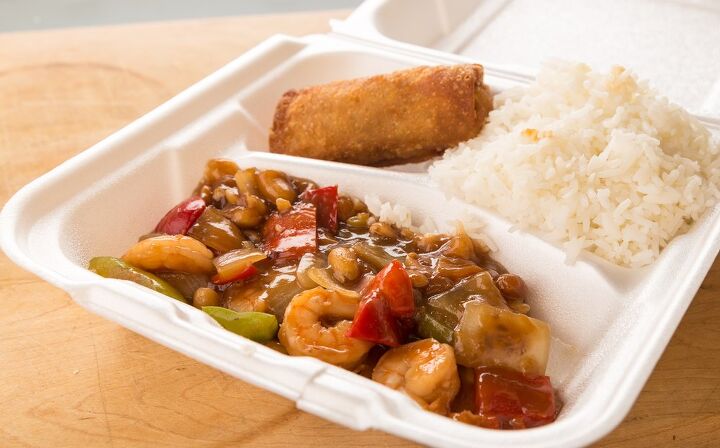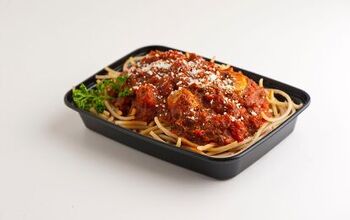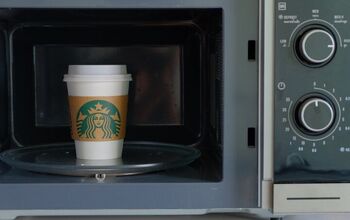Can You Microwave Styrofoam?

Since they have existed for so long, microwaves are credited with significantly simplifying kitchen tasks, such as heating food. And with the overuse of styrofoam in today’s world, people automatically assume you can just microwave anything. But is it even safe to microwave styrofoam?
According to the FDA, it is safe to microwave styrofoam as long as the container is marked microwave safe. Otherwise, the styrofoam will most likely leak into your food and also has the chance of catching fire and causing other dangerous hazards as well.
Not everything is microwave safe. But, styrofoam is one of those things that can sway either way. We’ll talk more about this below!
What Exactly is Styrofoam?
To understand whether it’s safe to use styrofoam in the microwave or not, you need to know a bit about what it is and what it’s made up of. Sytrofoam is a kind of polystyrene foam that is frequently employed in the construction sector.
Nevertheless, the phrase is frequently misapplied in several nations, like the United States and Canada, to describe a kind of expanded polystyrene foam that is pumped into molds to create throwaway take-out boxes, platters, coffee cups, and packaging peanuts.
These containers are much-liked because they are affordable and function well as insulators, keeping food and liquids warm.
Although polystyrene containers were widely used in the past, they have gradually come under fire for the environment and potential health risks in various American cities, including San Francisco and Seattle.
Environmentally speaking, the containers are tough to recycle and do not quickly degrade. They might also be eaten by animals who mistake them for food.
They include a substance called styrene, which has been related to cancer in both animal and human studies, raising some health concerns.
Can You Microwave Styrofoam?
Concerns have been raised about microwave use with polystyrene foam containers. Styrene, which has been related to cancer in both human and animal studies, is one important factor in this.
Additionally, chemicals used in production may leak into food when it is microwaved in a container composed of polystyrene or plastic. This is especially true of foods high in fat, such meats and cheeses.
It’s crucial to remember that the Food and Drug Administration (FDA) controls and tests the safety of plastic and polystyrene dishes, cups, and containers as well as their use in microwaves.
Any polystyrene or plastic product with the microwave-safe label has undergone a microwave safety test, so to speak.
On the other hand, stay away from microwaving food in polystyrene containers that are not marked as microwave-safe because their safety is not guaranteed. This safety measure holds true for all types of heating, not only microwaves.
How To Heat Food Properly
Here are some advice to assist you microwave food safely if you are worried about cooking it in a polystyrene container:
- Check to see if the container is microwave-safe. Check the label to discover if a styrofoam container is microwave-safe.
- Before microwaving, move food onto a ceramic or glass surface. Alternately, put the food in a glass, ceramic, or pyrex container before cooking it.
- Use an oven or a stove. Transferring the food into a skillet or pot to heat on the stovetop or into a baking dish to heat in the oven is another option to prevent any potential dangers.
- Look for fractures or scratches. Old or damaged polystyrene and plastic containers should be thrown away because they could leak potentially hazardous chemicals.
- Before heating the container, let it out. By doing this, pressure won’t build up and cause the food in the container to explode.
- Remove the container with care. To avoid burning your hands when removing the container after heating, wear gloves or mittens.
Does Styrofoam Leach into Food?
It seeps into meals and beverages. Toxins in Styrofoam containers, like benzene and styrene, leach into the contents when exposed to heat and light.
But contact with Styrofoam is harmful even while eating cold or dry foods. Styrene pollution can be found in a significant amount of our food.
Is Styrofoam Toxic to Humans?
In addition to endangering human health, polystyrene foam can also be bad for the environment. Foam is a lightweight material that is easily blown by the wind or washed into water sources by rain. It can also shatter into small bits that are simple for animals to ingest and is extremely brittle.
In What States is Styrofoam Banned?
The legislation banning Styrofoam has also had an effect at the local level in various states, including:
- Hawaii
- California
- New Jersey
- New York
- Texas
- Florida
- Massachusetts
- Washington D.C.
- Minnesota
- Oregon
- Washington State

Heather is a passionate writer who loves anything DIY. Growing up, she learned everything from home repairs to design, and wants to share her tips with you. When she's not writing, she's usually hiking or searching for her next DIY project.
More by Heather Robbins



























